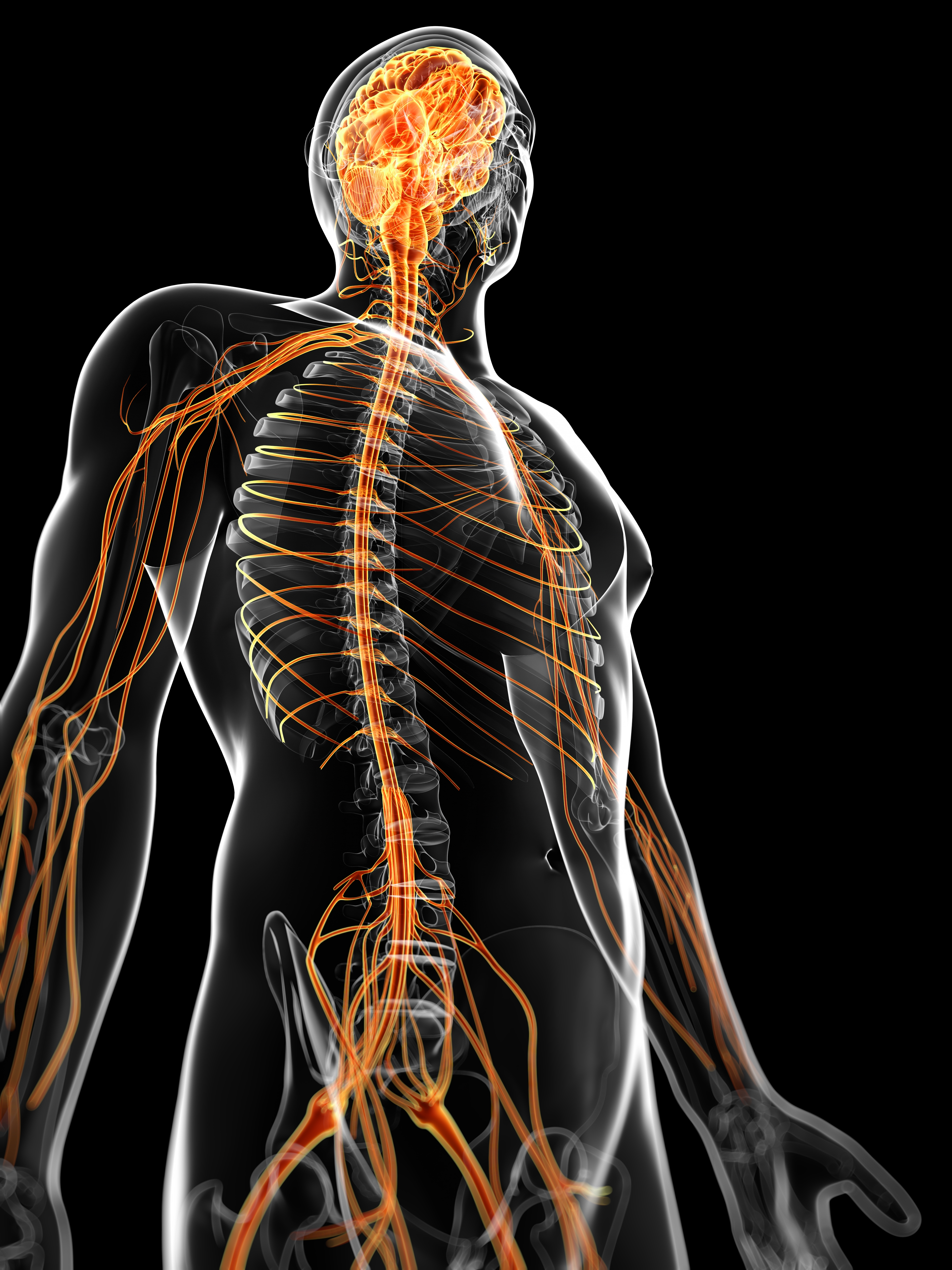This topic contains a lot of vocabulary that students may not have previously encountered. I find it useful to take time in the lesson to discuss the meaning of key words to help students understand the function or location of different aspects of the nervous system.
Please note, a version of a lesson PowerPoint has been included should you wish to use/edit/amend it.
Starter
(Slide 1) Get talking….Slide 1 poses a series of scenarios to students to get them thinking about the role of the nervous system.
- What do you know about the spinal cord? Students may have some awareness of the function and location of the spinal cord so allow them the opportunity to share this with others. They may mention (or you could introduce) cases of spinal cord injury such as Christopher Reeve or Paralympian athletes to demonstrate the role of the spinal cord in sending messages to and from the brain.
- How do you feel when riding a roller coaster? Discussing the sensations while on the ride introduces the fight or flight response and associated physical changes in breathing and heart rate. Students may mention this happens automatically (you don’t need to tell yourself to experience a stress response). Thinking about how you calm down once exiting the ride introduces the role of the parasympathetic nervous system.
- Focus on your breathing – what does it feel like? Focusing on their breathing makes us aware of an automatic process and so students might find their breathing chance. Take this opportunity to ask students why it is important, breathing is an automatic process, ask if they can identify other automatic processes e.g. heartbeat.
Main activities
(Slide 3) Introduce the divisions of the nervous system and warn students they will need to remember this diagram later in the lesson. Talk through the different components making reference to the starter questions where relevant. I also like to mention word meanings here to help students’ memory of the function and location of various components. For example,
Central nervous system – ‘central’ as it runs down the centre of the body.
Peripheral nervous system – ‘peripheral’ for periphery/on the edge – in this case nerves on the edge/outside of the central nervous system. (I have found students are often unfamiliar with the word periphery.)
Somatic – means ‘relating to the body’ so mention the sensory system consists of sensory and motor neurons that help your body respond to the environment.
Autonomic – ‘involuntary or unconscious’ – I remind students the word looks a little like ‘automatic’ and so this system is responsible for actions you perform automatically without thinking such as breathing and digestion.
Sympathetic – I will admit this one is a bit of a stretch but as this system helps us respond to emergencies (fight or flight) I tell them to think of it as feeling sorry for you (sympathy) and so helps you out by creating the stress response.
Parasympathetic – this system helps you relax after the sympathetic branch has led to a response to the emergency. As they work together students could think of ‘para’ as parallel – one system stirs you into action, the other calms you down. Again, a bit tenuous but students could also think of ‘para’ as parachute – it gently brings you back down from a heightened response.
(Slide 4) Once each division has been introduced set the team challenge. First provide all students with a statement card (see handout handout) outlining one division of the nervous system. Students need to work out which division their card refers to. Students now find someone else in the class who would be considered their contrasting division (slide 4 contains a helpful hint – click once to reveal the contrasting divisions). Finally students from groups create a visual image of the whole nervous system. A visual image means positioning each member of the group in way that explains the organisation of the nervous system as shown on slide 3. There should be 8 students to each group (the overall term – ‘nervous system’ is not included in the statement cards). As students formed contrasting pairs in task 2 each pair needs to join with three other pairs. Depending on class size you could have two groups or more. If you have an odd number, students could share a statement card or nominate a student to act as an expert and visit each group to help with any questions or confusions. When creating the visual image challenge students to do this without looking at their notes/textbook/slide 3 of the PowerPoint.
Some statement cards could be considered easier to work out than others so you may wish to assign these to students who may struggle with the more complex divisions.
Review
Hands up review. Students raise the appropriate finger to show their response to the questions shown on slides 5 -9.
**slides 5 -9 **
The central nervous system consists of the brain and ….?
Answer – ring finger: spinal cord.
The brain stem is responsible for regulating automatic functions such as…?
Answer – thumb: breathing, index finger: swallowing and little finger: heartbeat.
The parasympathetic nervous system returns the body to a relaxed state following the action of the….?
Answer – index finger: sympathetic nervous system
The somatic nervous system is made up of….?
Answer – middle finger: 12 cranial nerves, ring finger: 31 spinal nerves
The sympathetic and parasympathetic divisions of the nervous system form the ….?
Answer – little finger: autonomic nervous system.
